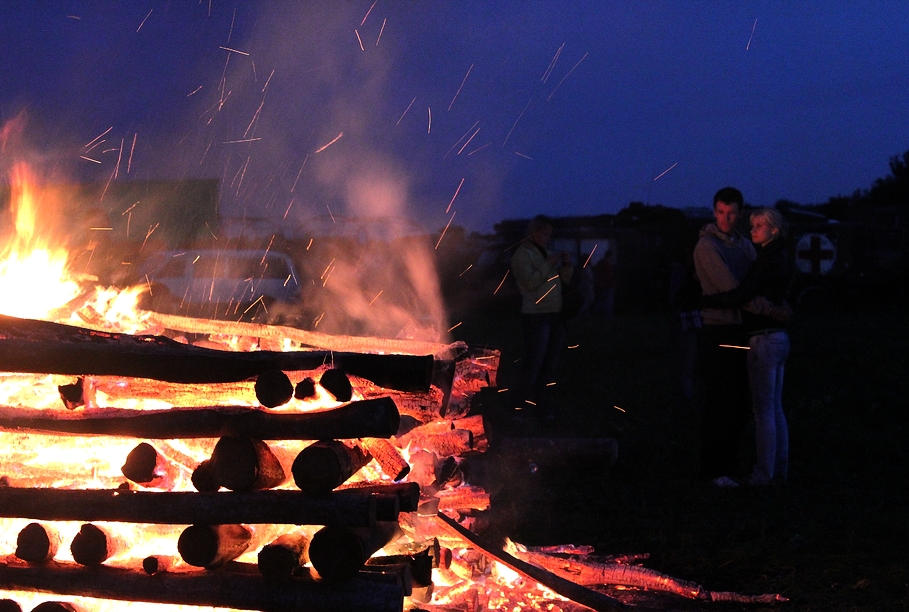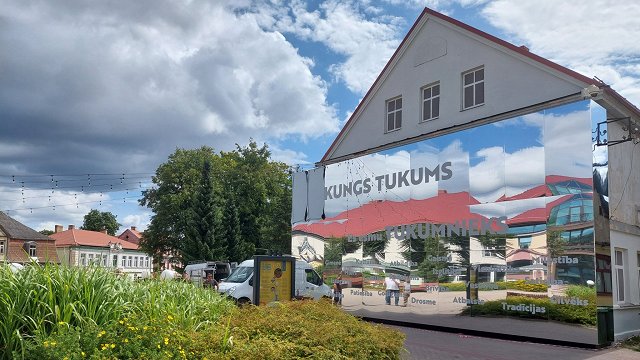Beginning already this Tuesday, Riga will be hosting its traditional open-air Green Market on Dom Square, where one can sample and enjoy all of the midsummer drinks, snacks and ritual accoutrements such as wreaths and garlands from craftspeople and small-scale homesteaders. Riga’s Art Nouveau Museum will hold an exhibit on the herbs, plants and flowers associated with this magical holiday from June 17-26. From June 18-21, each day a different city park, museum or neighborhood „hill” community in Riga will build a bonfire and host concerts and traditional dancing activities led by prominent practitioners of Latvian folklore and arts.
Riga’s festivities will culminate June 23-24 with a large-scale, multiple-stage all-night Līgo gathering at the November 11th Embankment on the riverside, which will end with the welcoming of the sunrise at 4:20 in the morning. However, as this interactive map of Latvia shows, Līgo festivities will be underway at hundreds of sites throughout the land as well.
Ancient Balts would mark the summer solstice by worshipping the sun at its highest and longest point in the northern sky. The pagan ritual traditions for honoring the midsummer night required staying up until sunrise while gathering together to feast, drink, sing, dance and be merry. The assembly and lighting of enormous impressive bonfires and the weaving of headdress wreaths from oak leaves (for men) and wildflowers (for women) are among the definitive symbolic rites in the summer solstice celebrations. Young couples are urged to meander away from other celebrants into the woods, fields and meadows to seek out the mythical „fern blossom”, a symbol of love and fertility.
With the arrival since medieval times and subsequent cavalcades of foreign invasion by Germans, Russians, and Swedes of the lands where ancient Lettish and other Baltic tribes had been living for centuries, the pagan rites and way of life were henceforth systematically suppressed. Christian church authorities forcibly prohibited any celebrations on the date of the astronomical solstice (June 21), allowing them instead on St.John’s day (June 24), hence the holiday’s current association with the name Jānis (Jāņi). Despite these attempts to discourage the practice of their traditional religious rites, the Baltic peasantry simply adapted to the new calendar without sacrificing the most significant elements of their summer solstice worship. Midsummer’s eve, the day before Jāņi, now coincides with the girl’s namesday of Līga, therefore the festival has also come to be known as „Līgo” night. The „līgo” refrain common to almost every folksong sung at midsummer means „to sway”.
Given the central role that beer plays in the Līgo celebrations, it is no surprise that lots of „swaying” ensues at any given summer solstice party. Caraway seed cheese is another special traditional food prepared in great quantities at Jāņi. However, modern-day „swayers” will invariably stock up on marinated grill meats and sausages at the supermarket for their open fire barbeques.
Leading up to the festivities this month, public radio listeners can sample a folksong for the Līgo holiday, which are also available online for getting a feel for the sounds of Jāņi. Some verses are meant for the lighting of the bonfire, others for greeting the sunrise, others for heckling and singing the praises of the gathered revellers. Hear some of the many variations of the hypnotic repetitive „līgo” refrains as collected and presented by folklorists Iveta and Vidvuds Medenis here.






















